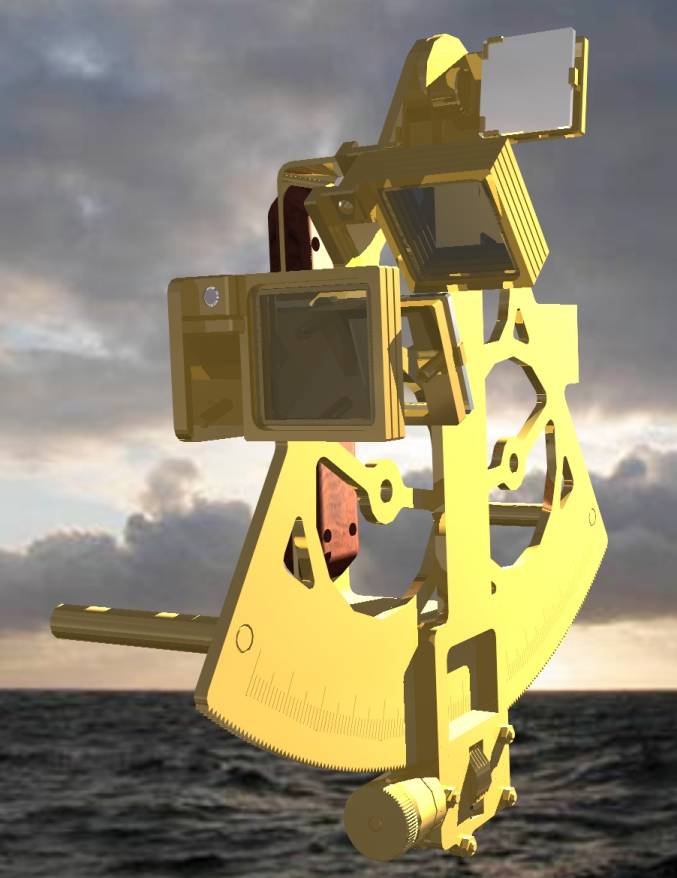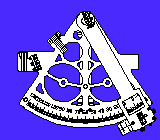Making a Micrometer Vernier Sextant.
This article shows you how to build your own micrometer vernier sextant, also known as a 'Drum Sextant'. The actual accuracy of your sextant is up to you as you make it, but the precision is to 0.2 minutes of arc. The precision is more than adequate for navigation - this sextant is not a toy. Once you've finished making the sextant, assuming reasonable accuracy during manufacture, you will have a sextant at least as good as the one used by Captain Cook in the Endeavour when he sailed round the globe. Making this sturdy sextant will be an achievement that will give you satisfaction for years. That's enough of the advertising, I'll get on with it now.
The sextant described looks like the picture below when you've finished it. The picture was from a 3D model of the sextant created by Rod Cantrill in Brisbane, Australia.

This sextant has a number of features:-
1) A handle for ease of use, and legs to lay flat in a stable position.
2) Three horizon shades and four index shades.
3) Micrometer vernier with quick release mechanism.
4) Stainless steel mirrors for corrosion resistance and reduced refraction error.
5) Sturdy brass design.
6) Index error may be completely corrected out.
7) Vernier precision to 0.2 arc minutes - greater precision if you wish!
8) The sextant costs the same as a very cheap plastic Ebbco sextant.
There is no telescope designed for this sextant, just somewhere to put one. I do not profess to be sufficiently knowledgeable in optics to be able to design one, so I leave this for you to design and implement. I recommend a 3x magnification, 30mm objective telescope. Commercial sextants have magnifications of 3x to 7x, while high quality cheap monoculars available in camera shops give a magnification of 8x and up. The choice is yours.
This article is split into a number of sections, as below:-
1) How the Sextant works
2) Skill level required.
3) Tools Required
4) Units used in this design
5) Raw Materials
6) Parts List
7) Making the Sextant
8) Special Tools
9) CAD drawings
10) Cutting Layout
11) And Finally.. (Legal stuff etc.)
12) Progress
Next>>

